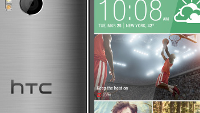HTC One (M8) is the first U.S. smartphone to support carrier aggregation

The HTC One (M8) was unveiled and launched, both taking place on Tuesday. And, it also is the first smartphone in the states to support carrier aggregation, which is used on LTE-Advanced networks. The aggregation "stitches together" two downlink transmissions which essentially increases the speed of the signal, and increases its strength.
We recently told you how AT&T used carrier aggregation to bring LTE-A speeds to Chicago. The nation's second largest carrier thus becomes the first U.S. carrier to use aggregation in the states. And while it doesn't increase capacity, as we pointed out previously, the technology is similar to exchanging two skinny pipelines for one big fat one. Sprint will employ the technology in the second half of this year, in conjunction with Sprint Spark. And both Verizon and T-Mobile will also have such technology embedded in its network.
As we see more carriers start to use aggregation, more smartphones will have what the HTC One (M8) has, which is support for this technology. Actually, the Samsung Galaxy S5 also supports aggregation, and could have been the first U.S. smartphone to include it, but by the luck of the draw, HTC launched its new flagship phone first.
source: GigaOM
As we see more carriers start to use aggregation, more smartphones will have what the HTC One (M8) has, which is support for this technology. Actually, the Samsung Galaxy S5 also supports aggregation, and could have been the first U.S. smartphone to include it, but by the luck of the draw, HTC launched its new flagship phone first.
source: GigaOM
Follow us on Google News










![A new Android bug is making it impossible to install new apps. Are you affected? [UPDATE]](https://m-cdn.phonearena.com/images/article/176703-wide-two_350/A-new-Android-bug-is-making-it-impossible-to-install-new-apps.-Are-you-affected-UPDATE.webp)

Things that are NOT allowed:
To help keep our community safe and free from spam, we apply temporary limits to newly created accounts: